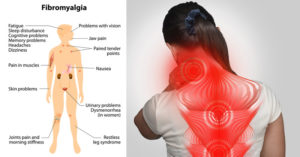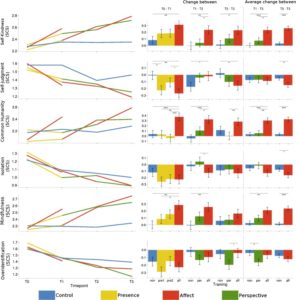Reduce the Alcohol Consumption of At-Risk Individuals with Mindfulness
By John M. de Castro, Ph.D.
“Its latest experiment has not only proven the usefulness of mindfulness in this area, but shown that just 11 minutes of the therapy can reduce alcohol consumption in heavy drinkers.” – Liat Clark
Inappropriate use of alcohol is a major societal problem. In fact, about 25% of US adults have engaged in binge drinking in the last month and 7% have what is termed an alcohol use disorder. Alcohol abuse is very dangerous and frequently fatal. Nearly 88,000 people in the US and 3.3 million globally die from alcohol-related causes annually, making it the third leading preventable cause of death in the United States. Drunk driving accounted for over 10,000 deaths; 31% of all driving fatalities. Excessive alcohol intake has been shown to contribute to over 200 diseases including alcohol dependence, liver cirrhosis, cancers, and injuries. It is estimated that over 5% of the burden of disease and injury worldwide is attributable to alcohol consumption. These are striking and alarming statistics and indicate that controlling alcohol intake is an important priority for the individual and society.
There are a wide range of treatment programs for alcohol abuse, with varying success. Recently, mindfulness training has been successfully applied to treatment. One attractive feature of this training is that it appears to increase the ability of the drinker to control their intake, resulting in less binge drinking and dangerous inebriation. Since, mindfulness appears to hold promise as a treatment for excessive alcohol intake, there is a need to examine the individual components of training needed in order to maximize effectiveness.
In today’s Research News article “Ultra-Brief Mindfulness Training Reduces Alcohol Consumption in At-Risk Drinkers: A Randomized Double-Blind Active-Controlled Experiment.” (See summary below or view the full text of the study at: https://www.ncbi.nlm.nih.gov/pmc/articles/PMC5737497/ ), Kamboj and colleagues recruited adult heavy drinkers and randomly assigned them to receive either a brief relaxation or mindfulness instruction. They were measured before and after the relaxation or mindfulness instruction for blood pressure, heart rate, heart rate variability, breath holding duration, drinking during the prior week, drinking motives, alcohol cravings, anxiety, depression, emotional state, mindfulness, and relaxation. They were also measured for their emotional reactivity to a sip of water or a sip of beer. The amounts of beer drunk during a “taste test” were also recorded. The participants then received a brief mindfulness instruction emphasizing observing their internal state or a relaxation instruction emphasizing muscle softening. They were instructed to practice once a day for seven days. After the practice week, they completed on-line measures of alcohol consumption and their emotional state.
They found that immediately following instruction, an indicator of parasympathetic nervous system activity (Heart Rate Variability) was increased in the relaxation instruction group but not the mindfulness group suggesting that the relaxation instruction produced a physiological relaxation. At the one-week follow-up they found that both groups had significant reductions in alcohol cravings, but, importantly, only the mindfulness instructed group had significant reductions in alcohol consumption over the week.
These are interesting results that suggest that a very brief mindfulness instruction targeting observing internal sensations can produce reductions in alcohol consumption over a week’s period. It will be important to establish, in the future, if the reductions can be sustained over a longer period of time. But, nevertheless, the results suggest that paying attention to the individual’s internal state can lead to less drinking. This may be identifying the component of mindfulness training that is most important for mindfulness effects on alcohol consumption, observing internal sensations. This conclusion, in turn, may suggest how to optimize mindfulness based alcoholism treatment programs.
So, reduce the alcohol consumption of at-risk individuals with mindfulness.
“By being more aware of their cravings, we think the study participants were able to bring intention back into the equation, instead of automatically reaching for the drink when they feel a craving.” – Sunjeev Kamboj
CMCS – Center for Mindfulness and Contemplative Studies
This and other Contemplative Studies posts are also available on Google+ https://plus.google.com/106784388191201299496/posts and on Twitter @MindfulResearch
Study Summary
Sunjeev K Kamboj, Damla Irez, Shirley Serfaty, Emily Thomas, Ravi K Das, Tom P Freeman. Ultra-Brief Mindfulness Training Reduces Alcohol Consumption in At-Risk Drinkers: A Randomized Double-Blind Active-Controlled Experiment. Int J Neuropsychopharmacol. 2017 Nov; 20(11): 936–947. Published online 2017 Aug 2. doi: 10.1093/ijnp/pyx064
Abstract
Background
Like other complex psychosocial interventions, mindfulness-based treatments comprise various modality-specific components as well as nonspecific therapeutic ingredients that collectively contribute to efficacy. Consequently, the isolated effects of mindfulness strategies per se remain unclear.
Methods
Using a randomized double-blind design, we compared the isolated effects of 11-minutes of “supervised” mindfulness instruction against a closely matched active control (relaxation) on subjective, physiological, and behavioral indices of maladaptive alcohol responding in drinkers at risk of harm from alcohol use (n = 68). Simple follow-up instructions on strategy use were provided, but practice was unsupervised and not formally monitored.
Results
Both groups showed acute reductions in craving after training, although a trend group x time interaction (P= .056) suggested that this reduction was greater in the relaxation group (d = 0.722 P < .001) compared with the mindfulness group (d = 0.317, P = .004). Furthermore, upregulation of parasympathetic activity was found after relaxation (d = 0.562; P < .001) but not mindfulness instructions (d = 0.08; P > .1; group x time interaction: P = .009). By contrast, only the mindfulness group showed a reduction in past-week alcohol consumption at 7-day follow-up (-9.31 units, d = 0.593, P < .001), whereas no significant reduction was seen in the relaxation group (-3.00 units, d = 0.268, P > .1; group x time interaction: P = .026).
Conclusion
Very brief mindfulness practice can significantly reduce alcohol consumption among at-risk drinkers, even with minimal encouragement to use this strategy outside of the experimental context. The effects on consumption may therefore represent a lower bound of efficacy of “ultra-brief” mindfulness instructions in hazardous drinkers, at least at short follow-up intervals.
Significance Statement
We examine the isolated effects of simple mindfulness instructions in people at risk of harm from alcohol consumption (“at-risk drinkers”). A single brief session of mindfulness resulted in significant reductions in alcohol consumption compared with a carefully matched relaxation control condition at 1-week follow-up. These findings suggest that even “ultra-brief” experience with mindfulness can have measurable and potentially clinically meaningful effects in at-risk drinkers.









